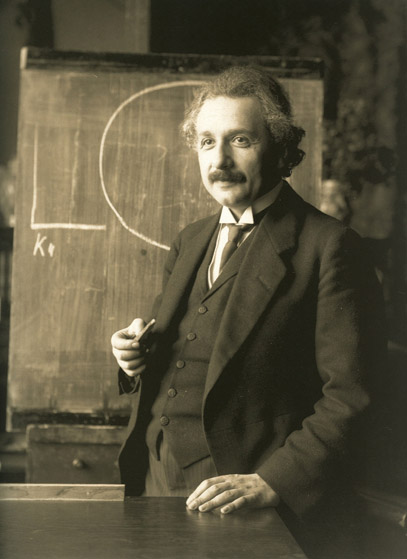
Newton vs. Einstein
 |

|
| Sir Isaac Newton PRS MP (25 December 1642 – 20 March 1727) was an English physicist and mathematician who is widely regarded as one of the most influential scientists of all time and as a key figure in the scientific revolution. His book Philosophiæ Naturalis Principia Mathematica("Mathematical Principles of Natural Philosophy"), first published in 1687, laid the foundations for most of classical mechanics. Newton also made seminal contributions to optics and shares credit with Gottfried Leibniz for the invention of the infinitesimal calculus.
Contributions to Gravitational Lensing: From 1670 to 1672, Newton lectured on optics. During this period he investigated the refraction of light, demonstrating that a prism could decompose white light into a spectrum of colors, and that a lens and a second prism could recompose the multicolored spectrum into white light. Newton's work with optics combined with his Theory of Gravitation later formed the basis for gravitational lensing as a scientific pursuit. From Wikipedia, the free encyclopedia
|
Albert Einstein (English pron.: /ˈælbərt ˈaɪnstaɪn/; German: [ˈalbɐt ˈaɪnʃtaɪn] (
Einstein's general theory of relativity predicted gravitational lensing as a scientific possibility. Although Orest Chwolson (1924) or Frantisek Klin (1936) are sometimes credited as being the first ones to discuss the g. lensing in print, the effect is more commonly associated with Einstein, who published a more famous article on the subject in 1936. Einstein theorized that unlike an optical lens, maximum 'bending' occurs closest to, and minimum 'bending' furthest from, the center of a gravitational lens. With the basis laid by Einstein's work, it was found later later that a gravitational lens has no single focal point, but a focal line instead. If the (light) source, the massive lensing object, and the observer lie in a straight line, the original light source will appear as a ring around the massive lensing object. If there is any misalignment the observer will see an arc segment instead. This phenomenon was first mentioned in 1924 by the St. Petersburg physicist Orest Chwolson, and quantified by Albert Einstein in 1936. It is usually referred to in the literature as an Einstein ring, since Chwolson did not concern himself with the flux or radius of the ring image. From Wikipedia, the free encyclopedia
|
Text and Images credit Wikimedia Commons